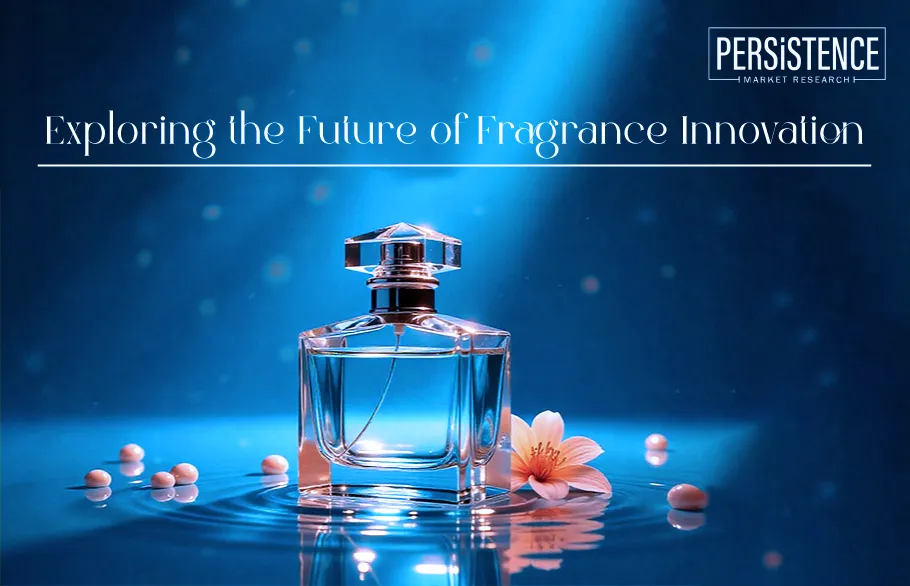- Blog
- Fragrance Market Innovation
Exploring the Future of Fragrance Innovation
Published On : 23 Jul 2025
The fragrance market is experiencing a period of dynamic transformation, fueled by evolving consumer preferences, technological advances, and a stronger emphasis on sustainability and personalization. As traditional perfume commerce intersects with digital innovation, wellness trends, and increasing environmental awareness, the future of fragrance holds various exciting possibilities.

Technological Advances Revolutionizing Fragrance Creation and Retail
Technology plays a pivotal role in advancing fragrance innovation and consumer interaction. Artificial intelligence (AI) and data analytics enable tailored scent creation, aligning with individual preferences and lifestyle needs. Online platforms have developed AI-driven scent quizzes, incorporating digital sampling, livestream sales, and consumer feedback to enhance discovery.
Sustainable Industry Practices and Managing Consumer Expectations:
Sustainability is no longer optional but imperative as consumers demand transparency and responsibility in ingredient sourcing and packaging. The industry’s adoption of biotechnology aligns with this by creating eco-friendly synthetic molecules that diminish reliance on overharvested natural resources. Concentrated fragrance formats, such as parfums with higher oil content, extend product life and reduce packaging waste, further supporting environmental goals. These efforts resonate strongly in Europe and North America, regions where environmental consciousness is highest.
Social and Cultural Shifts Influencing Fragrance Consumption
Social media, celebrity endorsements, and influencer culture significantly impact fragrance trends, especially among younger consumers, propelling the popularity of niche and artisanal brands. Fragrances are becoming powerful tools for personal identity, emotional well-being, and social expression. The industry is adapting by focusing on storytelling through scent narratives and offering customizable products that align with consumers' lifestyles and values. The rising practice of sampling and sharing fragrances digitally enhances social interaction and discovery, reshaping how fragrances fit into daily life.
How are consumer preferences shaping fragrance product development?
- Clean-Label Ingredients: Contemporary consumers place a premium on clean, safe, and natural ingredients, reflecting a wellness-oriented mindset. In markets like the US, consumers increasingly demand hypoallergenic, vegan, and cruelty-free fragrances, integrating this into their purchasing decisions.
- Authenticity: There is a growing desire among fragrance consumers for originality and distinctiveness in scent profiles. They actively seek unique fragrance combinations, leading to an increased demand for creative, complex, and unexpected olfactory experiences that differentiate products in a crowded marketplace.
- Versatility: The notion of a single signature scent is also being replaced by the concept of a “fragrance wardrobe.” Many consumers, particularly Gen Z, curate multiple fragrances tailored to different moods, occasions, or seasons. This trend highlights the importance of variety and self-expression, with consumers valuing the flexibility to switch scents to complement personal style.
- Mood Enhancer: There is also increasing demand for scents that offer mood modulation, whether to reduce stress, enhance relaxation, or boost energy. Ingredients like lavender, jasmine, and bergamot are rising in popularity due to their reputed calming, uplifting, or invigorating effects, indicating a broader wellness trend influencing fragrance development.
- Bottle Packaging: Consumers favor compact, portable fragrance formats, and travel-sized bottles are particularly popular among younger demographics who appreciate the ability to carry luxury scents conveniently in their bags or during travel.
Which fragrance formats and delivery systems are emerging?
Innovation in fragrance formats is transforming how scents are experienced and applied. Solid perfumes and multi-sensory products combining scent with tactile and visual appeal are providing new sensory interactions. Alcohol-free and skin-nourishing formulations are gaining traction, catering to consumers who prioritize wellness and skin health. E-commerce channels are also innovating with sample kits, subscription boxes, and fast delivery through quick commerce platforms like Blinkit and Zepto, especially notable in markets like India, enhancing accessibility and convenience.
What regional trends are shaping the future of fragrance?
Different regions exhibit distinct dynamics. In the US, premium fragrances outperform mass-market products, driven by retail specialists such as Sephora and Ulta, alongside sustained e-commerce presence. Meanwhile, India’s fragrance market is experiencing growth fueled by urban consumers seeking occasion and mood-specific scents. Europe witnesses a steady growth with consumers valuing clean formulations and artisanal luxury scents.
Industry Report

Request Report Sample
Your privacy is important to us; your data is secure
Contact Us
Latest Reports
-
Piezoresistive Pressure Sensor Market by Sensor Type (Absolute, Gauge, Differential, Sealed), Pressure Range (Low Pressure (<10 kPa), Medium Pressure (10 kPa – 1000 kPa), High Pressure (>1000 kPa)), End-Use Industry (Automotive & Transportation, Industrial Manufacturing, Healthcare, Aerospace & Defense, Electronics) and Regional Analysis for 2026-2033
-
Aquarium Accessories Market by Product Type (Filtration Items, Lights & Hoods, Temperature Control Systems, Others), End-User (Residential, Commercial), Distribution Channel (Online, Offline), and Regional Analysis for 2026-2033
-
Oxygen Therapy Market by Product Type (Compressed Oxygen, Concentrated Oxygen, Liquid Oxygen), Disease (Respiratory Disorder, Cardiovascular Disease, Sleep Apnea, Pneumonia), End-User (Hospitals, Home Healthcare, Clinics), and Regional Analysis for 2026-2033
-
Air Curtains Market by Product Type (Non‑Recirculating, Recirculating, Heated, Others), Airflow Capacity (Up to 500 m³/h, 500–1000 m³/h, 1000–1500 m³/h, Above 1500 m³/h), Application (Commercial, Industrial, Residential, Others), and Regional Analysis for 2026–2033
-
Personalized Stationery Market by Product type (Storage & Filling Products, Paper-Based Products, Drawing & Writing Instruments, Accessories, Bags, Others), Application (Educational Institutes, Corporate Offices, Personal Use, Hospitals, Others), and Regional Analysis for 2026–2033
